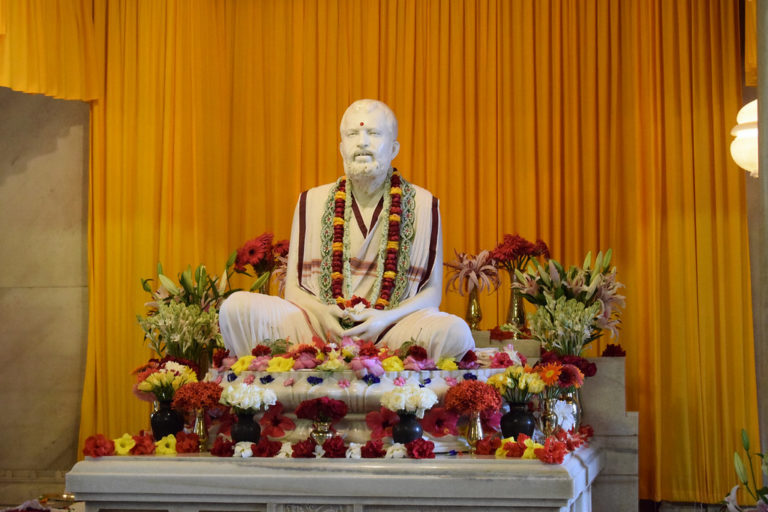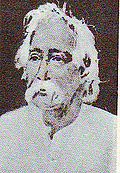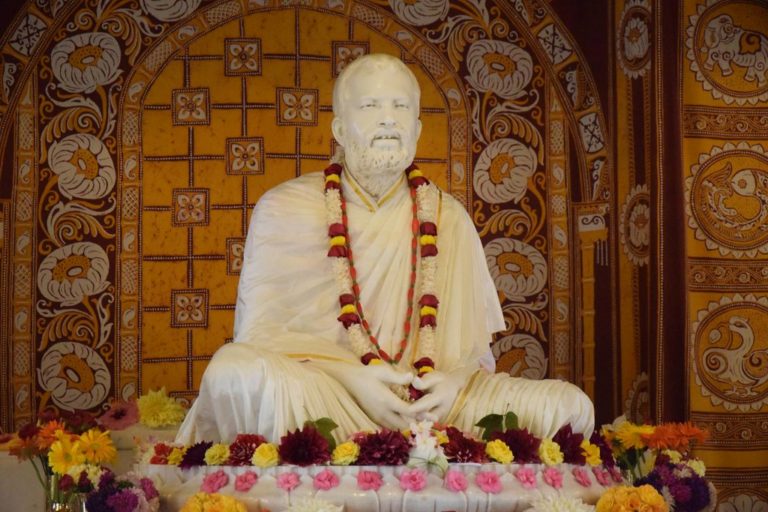Sri Ramakrishna: Life and Teachings, a masterful treatise by Srimat Swami Tapasyananda Ji, one of the former Vice-presidents of the Ramakrishna Order, was recently updated from its original July 1983 edition and republished in August 2018. Subtitled An Interpretative Study, it makes the point that Sri Ramakrishna’s interpretation of Vedanta differs significantly from the classical Advaita Vedanta of Adi Shankaracharya.
Shankaracharya’s Vedanta was the Vedanta of Sri Ramakrishna’s guru, Tota Puri. In this school of thought, Swami Tapasyananda Ji writes, “There was not much room for a Personal God or the Divine Mother, who had hitherto been a part and parcel of Sri Ramakrishna’s life.” (p. 86) We all know the story of how Sri Ramakrishna attained nirvikalpa samadhi under Tota Puri’s guidance. Later Tota, struck down by dysentery, tried to drown himself in the Ganga, but found to his amazement that the river had become too shallow to allow it—a condition that is completely contrary to empirical reality and seems to have been a trick played on Tota by the Divine Mother.
“At this point,” the swami writes, “a new revelation came to the astonished mind of Tota. His conviction till then had been that Ultimate Reality is Pure Being. But he realised through a new revelation that It was Pure Will also. It is this Cosmic Will, the Power [Shakti] of Brahman, that Sri Ramakrishna knew as the Divine Mother and that Tota had denied so far. Now, from his incapacity to court even selfchosen death, he found that without the sanction of that Divine Will, the Reality of realities, not even a leaf can move in this world. … By the Master’s grace, his knowledge was completed when he thus came to understand that Brahman is Personal-Impersonal or BeingWill.” (p. 90)
Swami Tapasyananda Ji’s point is that “the Ultimate Reality is Being-Will and not mere Being, as maintained in the classical Vedanta.” (p. 95) Reverting to traditional Sanskrit terminology, we can translate this to mean that Ultimate Reality is not Brahman alone, as held by the Shankaracharya school, but Brahman combined with Shakti, which manifests Itself as the Divine Mother. This idea is a central point in what might be called the Ramakrishna Vedanta, the Vedanta taught by Sri Ramakrishna. From it we can conclude that Sri Ramakrishna enhanced the classical Vedanta by infusing into it the concept of Shakti.
Critics may object, “This turns nondualism into dualism. Now we have not one Reality, Brahman, but two: Brahman and Shakti.” Swami Tapasyananda Ji refutes this by saying, “The Personal and the Impersonal are recognised as the obverse and the reverse of the same coin.” (p. 98) Does the admission that every coin has two sides constitute dualism? No: there’s still just one coin.
To reinforce this point, Sri Ramakrishna offers an analogy. He compares Brahman and Shakti to fire and its burning power.1 These are not separate entities, but for purposes of discussion we give them different names. Fire may be considered an entity; its burning power is one of its aspects; and they are inseparable. Sri Ramakrishna also gives us the analogy of a snake at rest and in motion.2 It’s the same snake, but in different states.
Sri Ramakrishna’s interpretation solves a problem in the classical Vedanta. Brahman in its pure nirguna state is completely inactive. It doesn’t do anything. As such, it has little meaning for human beings. When we introduce the idea of Brahman in its saguna state, we get the possibility of meaningful activity; but we also get the question, “What caused Brahman nirguna to develop a saguna aspect?” Sri Ramakrishna answers this question by introducing Shakti. Brahman is inactive, Shakti is active; Brahman is static, Shakti is kinetic; Brahman is inert, Shakti is dynamic. Brahman without Shakti is crippled, like a man with one leg. He can stand but can’t walk. Shakti gives him a second leg, which enables him to walk. By giving Brahman a dynamic aspect, Shakti makes It more meaningful for human beings.
Interpreting Swami Tapasyananda Ji’s thesis, we can conclude that Sri Ramakrishna contributed to Vedantic thought by injecting into it a strong dose of Shaktism. He added a personal aspect to what had hitherto been purely impersonal. Philosophically, he emphasised the oneness of Brahman with Shakti; geographically, he synthesised austere South Indian jnana with warm Bengali devotionalism; overall, he enriched classical Vedanta by giving it a focus for devotion.
References:
1) Sayings of Sri Ramakrishna. Chennai: Ramakrishna Math, Saying #50
2) Ibid., Saying #48
Source : Vedanta Kesari, August, 2020



